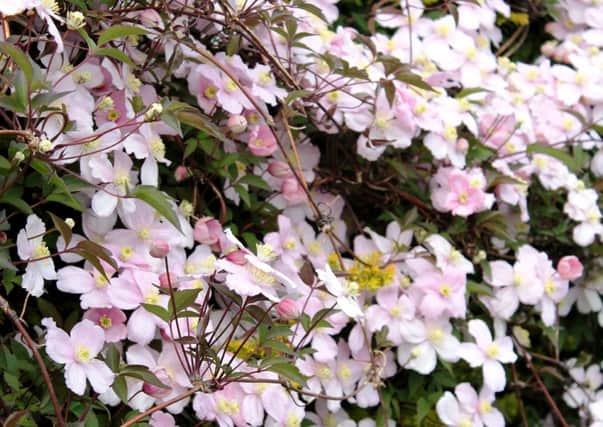Myth and mystery


It’s been a good few weeks for Maythorn. A few days of sun worked its magic, and trees and shrubs seemed to blossom overnight.
Of course, hawthorn, or quickthorn – or Maythorn – is still so common that few gardeners can be bothered with it. It’s too easy to grow; it can tolerate sites and situations where few other trees and shrubs will survive.
Advertisement
Hide AdAdvertisement
Hide AdYears ago, when the Enclosure Acts demanded every field had its own boundaries, hawthorn was the ideal way to prevent stock from roaming – every strip of once-common land seemed to be armoured by a ring of spiky hawthorn hedges which flowered in spring, fruited in autumn and kept their growth tight and compact enough to maintain order on the farm.
Modern agriculture has no time for hedges which need tending to keep them in shape and stockproof, so hawthorn has become something of an anachronism. Many an established hedge was ripped up; today, those which survived – particularly any which have been able to grow into shapely trees – are still a delight to the eye and a good argument as to why more gardeners should grow hawthorn.
True, it can be unfriendly with its long, sharp spines and close growth, but that in itself can be a bonus – it keeps out unwelcome visitors. And it’s easy to cultivate, easy to tend and thoroughly dependable.
The variety you see growing wild is likely to be white-flowered and seductively scented Crataegus monogyna. But if you don’t like white, there’s always ‘Pendula Rosea’, with pink blossoms on drooping branches. I
Advertisement
Hide AdAdvertisement
Hide AdCultivated varieties include C oxyacantha ‘Paul’s Scarlet’ and ‘Plen’’ which are red and white respectively. There are fewer thorns to scar the gardener and growth is not as rapid.
A more unusual form is C orientalis with berries veering towards yellow, while for the most vicious, but one of the most strikingly beautiful, there’s C prunifolia with its barbs, berries which last well into winter, and beautiful autumn colour.
Hawthorns are extremely tolerant of poor conditions. They can withstand drought and deluge, poor soil and rich soil, exposed sites and atmospheric pollution. And they are beautiful.
May works its magic on beautiful hawthorn
The last few flowers of that rampant clematis, Montana (aka the anemone clematis), are telling us that it’s summer.
Advertisement
Hide AdAdvertisement
Hide AdHopefully, June, July and August are set to be scorchers and a whole host of other clematis will make merry while the sun shines.
In the meantime, what about that Montana? This year, it’s had a field day, producing masses of beautiful blooms. Unfortunately, it has also produced clinging tendrils at an amazing rate – enough to provide a major headache for many a gardener wanting to get the plant under control but puzzled by how and when to prune this exceptional clematis.
Thankfully, Montana is also a bit of an exception to the family – it is so rampant that it’s easier to let it finish flowering and then hack it back to where it belongs. There’s no need to be selective because Montana seems to thrive whatever the treatment.
But with the late summer bloomers, like ‘Ville de Lyon’, things are very different.
Advertisement
Hide AdAdvertisement
Hide AdPruning clematis is a task steeped in myth and mystery; when to cut, where to cut and how to cut are three questions which crop up annually. But it’s relatively simple when you know to which group your clematis belongs. Then, pruning becomes just another annual chore.
Basically, clematis fall into three groups – those which have small flowers in spring and summer; those which have large flowers in mid-summer; and those which bloom in late summer, like the aforementioned ‘Ville de Lyon’.
All you need to remember is that the first two groups need pruning immediately after they have finished flowering, while the late bloomers need cutting back hard early in the year to encourage fresh growth. It’s on those new shoots that this year’s flowers will appear. So, just cut all the stems right down to the bottom pair of buds; in fact, almost to the ground.
The only time you serve up the same sort of treatment to the spring and early summer bloomers is when they are newly-planted; by pruning them to shape then, you encourage stronger growth and a sturdier framework for future years.
Advertisement
Hide AdAdvertisement
Hide AdClematis are a wonderfully diverse and colourful family, much loved by gardeners, but they are plants which normally need to be trained so they know their place.
Let the likes of Montana have a free rein, and you’ll be sorry.